Court Cards are often perceived as very difficult to understand. Especially when you are learning the Tarot, understanding the meaning and essence of a Court Card can prove to be very difficult. I can tell from personal experience that getting to know what a Court Card stands for in a reading, or understanding the meaning of the different Court Cards in a spread is often quite difficult to interpret. However, over a period of time, the very same Court Cards become friends and allies in a reading. ?
This is an introductory post in a series of articles where I am going to talk about the Court Cards in the Tarot card deck. So, lets begin!
If you ever find yourself being confused about what the Court Cards are really all about, go back to the basics and think this way:
Court Cards represent people and their personalities.
With this statement in mind, look a the Court Card you’ve pulled, and the Suit from which it came from. Then, you ought to find it pretty easy to connect with any Court Card in your readings. But of course, I’m getting ahead of myself. First, let’s get our basics in place.
Finding The Court Cards In A Tarot Card Deck
In every Suit of the Minor Arcana, you find cards numbered from 1 to 10. And after that, you find cards that are usually called ‘Page’, ‘Knight’, ‘Queen’ and ‘King’. And at the main point of the image are various people — a child, a young man, a woman, and a man. These cards are usually called the Court Cards of the Tarot Card Deck.
Court Cards – What’s In The Name?
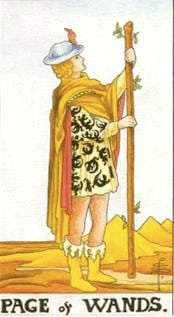 In every suit of the Minor Arcana, we find 4 Court Cards, namely, the Page, the Knight, the Queen and the King. The nomenclature may vary in some decks, depending on the theme of the deck. So you may find that the Page is named as Princess, and the Knight has become a Prince. Regardless, in a typical Tarot card deck, we thus find a total of 16 Court Cards.
In every suit of the Minor Arcana, we find 4 Court Cards, namely, the Page, the Knight, the Queen and the King. The nomenclature may vary in some decks, depending on the theme of the deck. So you may find that the Page is named as Princess, and the Knight has become a Prince. Regardless, in a typical Tarot card deck, we thus find a total of 16 Court Cards.
For example, in the DruidCraft Tarot Deck, these cards are called the Princess, the Prince, the Queen and the King. You’ll find a similar nomenclature in the Thoth Tarot Deck, and many other Thoth-based Tarot Card Decks.
 Many people reason that with 3 males and 1 female, the traditional Court Card group is a little lopsided. Probably, that is why some decks choose to have a more balanced approach with the genders by distributing them equally. Alternatively, many say that the ‘Page’ card is gender-neutral, which means, it can very well be a woman.
Many people reason that with 3 males and 1 female, the traditional Court Card group is a little lopsided. Probably, that is why some decks choose to have a more balanced approach with the genders by distributing them equally. Alternatively, many say that the ‘Page’ card is gender-neutral, which means, it can very well be a woman.
Court Cards and Gender
However, in my personal experience with the cards, I have found that in readings the Court Cards are not often gender specific. I have seen Queens come up for men, Kings come up for women, Pages come up for older people and so forth. So, to me, the gender of the Court Card doesn’t always reflect the gender of the client. Rather, it reflects the maturity or the overall approach or attitude that the person is carrying with him / her into the specific situation that the surrounding cards are talking about.
Court Cards and Personality Traits
Court Cards absolutely do reflect the personality traits of people. They tell us how the person thinks, feels and acts – and where their basic motivational energies originate. They also inform us about the level of maturity of the person, and the kind of approach the person is using at that time.
The Myers-Briggs Personality Trait Indicator
Somewhere around the 1940s, Isabel Briggs Myers and her mother, Katherine Briggs, started to develop the model of these tests, based around the theories and ideas of Carl Jung. These tests are now a very well respected method of gaining a deeper understanding the personality of a person, and learning more about the motivational factors behind that personality.
According to the Myers-Briggs Personality Trait Indicator tests, there are a total of 16 different Personality Types. Isn’t it an interesting coincidence that there are also a total of 16 Court Cards in a Tarot card deck?
(Of course at this point, the voice in my head tells me that there are no coincidences.)
Court Cards In A Reading
In a reading, Court Cards usually stand for either the client or the people in the client’s life. Based on the Court Card drawn, we can know the personality of the person. Meanwhile, the cards surrounding these Court Cards will talk more about the situation. This way, we can interpret how the person in that situation is going to behave.
Welcome To The Court of Tarot
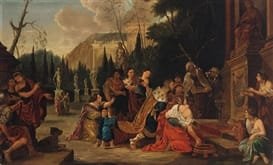 Court Cards owe their origins to the traditional Courts that surrounded royalty over the ages. Hence, we also see a distinct hierarchy within these four Court Cards as well.
Court Cards owe their origins to the traditional Courts that surrounded royalty over the ages. Hence, we also see a distinct hierarchy within these four Court Cards as well.
In a traditional court, Kings and Queens used to be surrounded by a variety of Courtiers. Serving the King and Queen were the different Knights. And the Pages used to serve these Knights.
Thus, looking at the hierarchy, we can deduce:
- Pages served the Knights, and were usually apprentices –i.e.- Knights-in-Training.
- Knights served the Queen, and were her champions.
- The Queen was, of course, loyal to and ‘served’ the King.
- The King was the overlord of the entire Kingdom.
The Court Cards and Maturity
This hierarchy has also been used to devise a yardstick for determining the incremental increase in the maturity level of a person. For instance:
- The Page is often described as a young, immature person, who is a student or starting out in life. He is also often referred to as a child.
- The Knight is described as a more action-oriented person, who is slightly more mature than a Page. He could be someone in his 20s, for example. He is more of a go-getter.
- The Queen is often described as a mature person, who is in touch with the feminine side of her psyche. So a Queen can often be a motherly person, or someone who has a caring, compassionate, and nurturing side to their personality.
- The King is considered to be the most mature among the lot. He is considered to have mastered the element that he rules, and has full control over the feelings, emotions, thoughts and actions that are a part of his personality.
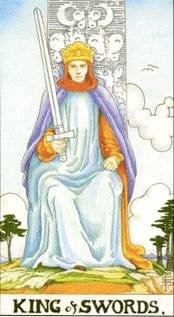 Based on this concept, we can therefore say something like: a Knight is more mature than a Page, but the King is even more mature than the both of them.
Based on this concept, we can therefore say something like: a Knight is more mature than a Page, but the King is even more mature than the both of them.
Maturity Matters
In a reading, if a person comes up as a Page, this doesn’t mean that he is a childish, immature person. It just shows that in the given surrounding situation, this person is going to act on his very basic, elemental energies.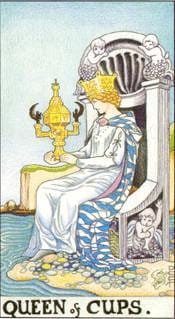
But if someone comes up as, say a Queen, then we know that a certain amount of maturity, combined with feminine wisdom and intuition is bound to play a role in the different actions that this person will take in that situation.
The Court Card Elements
Since each of the four Suits of the Minor Arcana are associated with an element, it is but natural that the Court Cards from each suit are also linked with the element of that suit. For instance, Cups are linked with the element of Water, and so the Cups Court Cards will be linked with that element as well.
However, these four elements (Fire, Air, Water, and Earth) are also linked with each stage of maturity.
- Pages – Earth
- Knights – Air
- Queens – Water
- Kings – Fire
There is a very simple reasoning for this.
- Earth is a very tangible, ‘real’ element, something you can touch and feel — Pages need / want that sort of stability and therefore are a great representation of that energy.
- Air is all about the intellect, the mind, and communication – a perfect description of the Knight who wants to go out into the world and make his mark.
- Water is the symbol of feelings and intuition – the key personality traits of the Queen.
- Fire is an passionate element. Passion and zeal are exactly what a King needs to rule over his realm.
Here is a quick table that brings this together:
Tarot Court Elements
Elemental Associations of Tarot Court CardsSuit | Page🜃 | Knight🜁 | Queen🜄 | King🜂 |
|---|---|---|---|---|
Wands🜂 | Earth of Fire 🜃 of 🜂 | Air of Fire 🜂 of 🜂 | Water of Fire 🜄 of 🜂 | Fire of Fire 🜂 of 🜂 |
Cups🜄 | Earth of Water 🜃 of 🜄 | Air of Water 🜁 of 🜄 | Water of Water 🜄 of 🜄 | Fire of Water 🜂 of 🜄 |
Swords🜁 | Earth of Air 🜃 of 🜁 | Air of Air 🜁 of 🜁 | Water of Air 🜄 of 🜁 | Fire of Air 🜂 of 🜁 |
Pentacles🜃 | Earth of Earth 🜃 of 🜃 | Air of Earth 🜁 of 🜃 | Water of Earth 🜄 of 🜃 | Fire of Earth 🜂 of 🜃 |
From this table we can see how the Suit elements and their energies tie in with the elemental energies of the particular Court Card.
Multiple Court Cards – Not An Error By Any Means
Normally, in a reading, you can see a couple of Court Cards come up. However, once in a while, I am often faced with a reading that has many Court Cards popping up. When this used to happen (especially when I started out), I used to get pretty confused. I wondered if I’d somehow, unknowingly, done something wrong. ?? Of course, that wasn’t the case. But it did used to leave me feeling a bit weird. However, as time went by, and I got to know these cards a little bit more, I realized that it wasn’t a mistake, and that I need not worry.
When Court Cards Talk About The Client
As I have said before, the Court Cards depict people and their personalities. So when you see a few Court Cards here and there in a spread, you can sense how your client is going to behave in a particular situation.
When Court Cards Talk About People In The Client’s Life
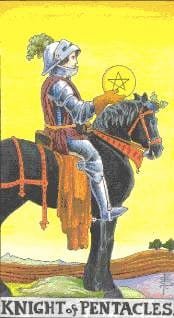 However, the Court Cards can also depict people in the client’s life that have a certain amount of influence over the situation. Thus, if you sense that a particular card doesn’t talk about the client at all, then don’t worry! You can describe the personality traits of that card to the client and ask him if that describes a friend or a family member or a co-worker. Usually, you’ll find the client nodding and saying, “Yeah! That is my friend…” or something similar. ?
However, the Court Cards can also depict people in the client’s life that have a certain amount of influence over the situation. Thus, if you sense that a particular card doesn’t talk about the client at all, then don’t worry! You can describe the personality traits of that card to the client and ask him if that describes a friend or a family member or a co-worker. Usually, you’ll find the client nodding and saying, “Yeah! That is my friend…” or something similar. ?
Over a period of time, as your experience with the Court Cards grows, you will find yourself intuitively understanding if a specific Court Card is talking about the client or someone in the client’s life.
Many Court Cards For One Person
Sometimes you will encounter a situation where you have several Court Cards popping up just to describe one person -i.e.- your client. These  different Court Cards will then show you how your client is going to behave in the different situations depicted by the other / surrounding cards in the spread.
different Court Cards will then show you how your client is going to behave in the different situations depicted by the other / surrounding cards in the spread.
Here’s an example that will make it clearer: In a particular situation at his work, this guy will be a Knight of Swords and take care of all the different issues. But at home, around his wife, he transforms into a Page of Cups, wanting her love and attention all the time. ? Around his parents, he is a King of Wands and is the son who cares for them. Around his buddies and friends, he is a Knight of Wands and parties all night.
Which Court Card Are You?
I do believe that all of us do have a variety of different personalities that come to the fore in different situations. We deal with different situations using the different aspects of our core personality, and prefer to have that aspect take over while we are in that particular situation. In short, we are a combination of various personality features.
So how do we derive which Court Card forms your core personality?
There are 2 ways to go about this:
Astrology and Personality
Since each of the Court Cards is associated with a maturity level and an Element, we can combine this to derive your personal Court Card.
For example, if you are someone in the age range of 20 to 30 (which is a Knight), and your Sun Sign is Sagittarius (which is a Fire sign and thus is linked with Wands), you just might be a Knight of Wands.
You can totally go nuts with this system, actually. If you throw in your Moon Sign into the equation, then more likely, you will find yourself associated with 2 different Court Cards.
If you are just starting out, this system can serve as a good starting point.
Experience
However, I feel that you should spend some time with the cards, get to know them better. If you do readings for yourself, then it gets even better. Over a period of time, you will instinctively know which Court Card you connect with. You can also observe which Court Card comes up to represent you most often. You might find yourself connecting with one or even three different Court Cards – which is just fine!
Understanding the Tarot Court Cards
With all this information as the basic starting point, we are now going to embark on an interesting journey – the Journey of Understanding the Tarot Court Cards.
In the next parts of this series of articles, I am going to talk about each individual Court Card and go into more detail about the personality traits of that card.
Please join me in this interesting journey, and get to know more about how these Court Cards reflect the different shades of personalities that are all around us – both in a reading, and in real life.
Your Take…
What is your experience of the different Court Cards? Do you also interpret the Court Cards in a similar fashion? Or do you have some other basic interpretation for them? Are you comfortable with having a few Court Cards in a reading? Which Court Card do you associate yourself with?
Do share your thoughts in the comments section below.


I’m curious… every other study of the court cards has Kings associated with Air and Pages associated with Earth. You have these reversed?
Ouch! 😛 Yes, looks like I swapped those two (back in the day when I wrote this post) and just went with it. Sorry about that. I’ve fixed the information in the post. Thanks for pointing it out. Much appreciated.
I have a question maybe someone can answer for me, I am no Tarot card user and I have only been for one reading in my whole life, my faith is Indian and obviously spiritual, what I would like to know if anyone can tell me the meaning of the Tarot card with the image of a man with I think rope or swords going through his ears, does anyone here know this symbol and can you tell me what it means, thank you
Hi there! Are you perhaps referring to the image of the 9 of Swords? Because that was the one that came to my mind when I read your description. Here are 2 images that popped up. and
and 
In the Tarot, many aspects of the imagery is very symbolic. Swords represent mind, or thoughts. And thoughts can often be negative, and cause self destructive patterns within ourselves. The 9 of Swords talks of such a situation that has gone too far — all the thoughts and negative self talk has now started to cause nightmares, or sleepless nights for this person. He feels as if his hands are tied. He doesn’t feel motivated or confident about his life and situations. This card is all about anxieties and worries that are caused by overthinking, and worrying, and low self confidence and low self esteem.
Was this the image you saw? If not, can you post a link to that image? That way it’ll be easier for me to help. ?
~ M
from the time i learnt tarot cards I used to get really confused when it came for court cards .
you made this so simple.. highly appreciate your efforts ..
thanks for the help..
Thank you Rasleen for your kind words. I am glad that this Court Card series helped.
Thanks!
?
This is a tremendous help! Thank you 🙂
Thanks! 🙂
wow … nice topic…
very nice
Thanks Abie! I’m glad you enjoyed the article!
Hi
I am learning the Tarot and my tutor only uses court cards as people (the kings and queens) the pages as messages and the knights as events, so that’s what she has taught me, but i feel like i would like to be more flexible with these cards, i have done several readings where the querent could not place the court card and the reading becomes difficult for me, i read for volunteers who know i’m learning but i do get them checked by my tutor so as they are not kept dangling so to speak. But it’s doing my head in i must say. I do like your method above though, very interesting thank you.
Thanks Sue Allen! You’re very welcome! I’m glad I could help!
🙂
Hi..
I have been trying to understand these court cards but was not able to understand them clearly. Rather I was pretty confused.But the way you have explained… its like suddenly I could understand my own readings regarding court cards. So thank you so much. I really really appreciate your efforts and so beautifully court cards has been explained 🙂
Thanks for your encouraging words Nupur. You’ve made my day! I am glad that my articles were helpful for you to understand the court cards better. 🙂